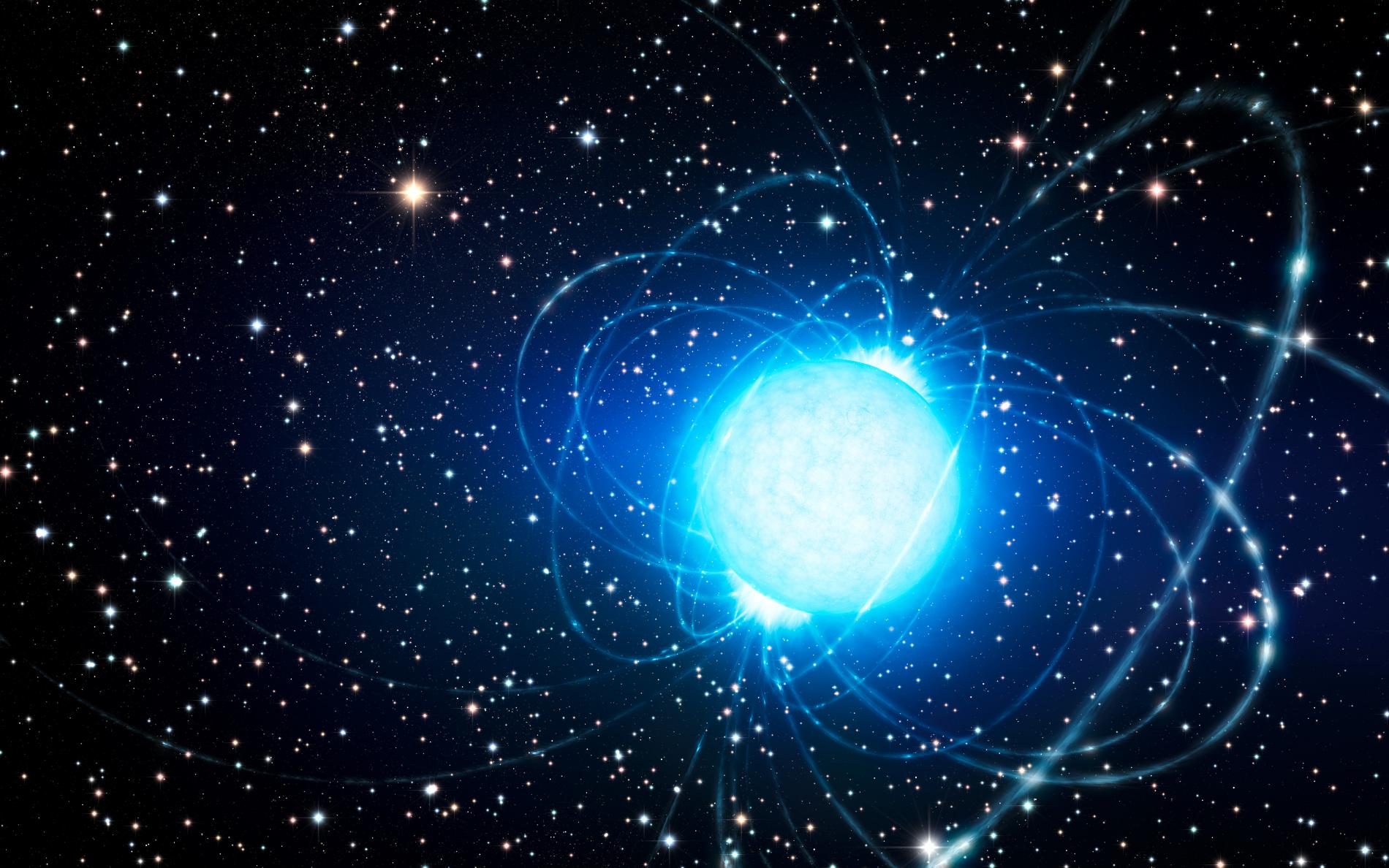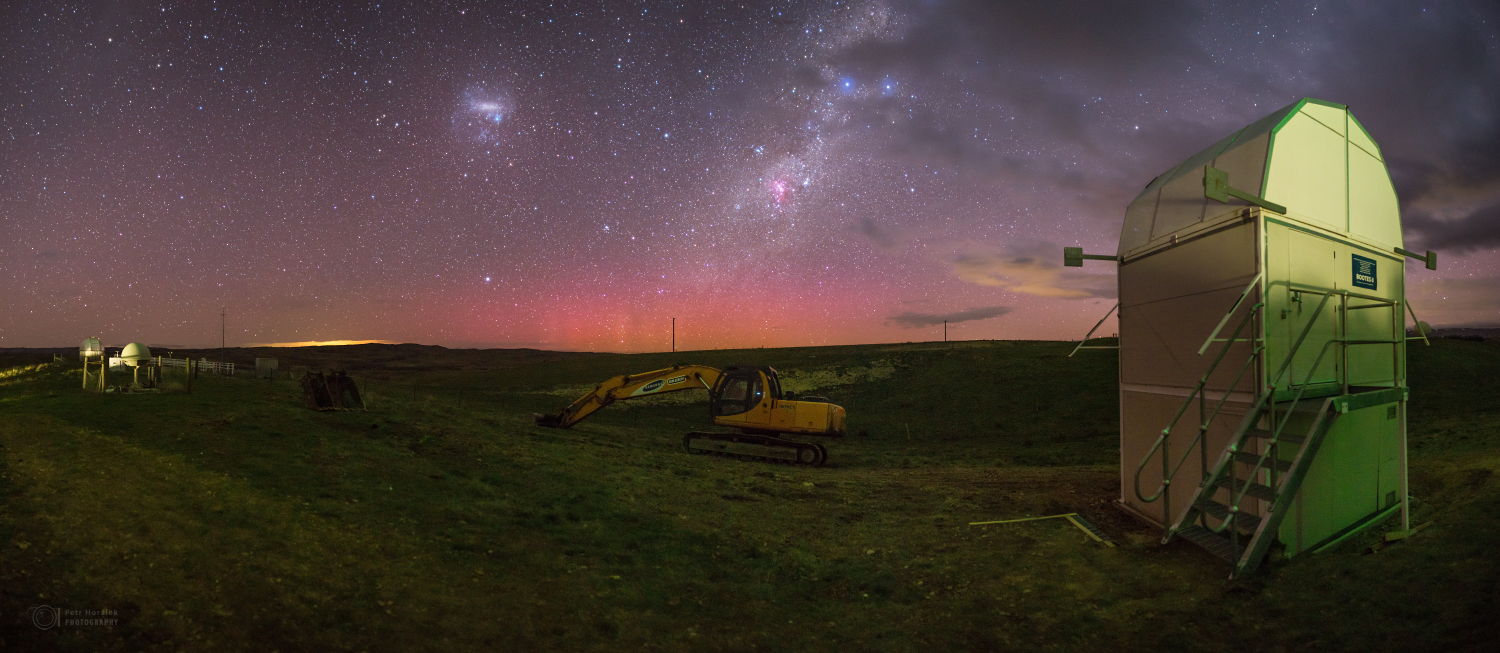Rapid radio bursts detected in our Galaxy
The identification of a source producing very short duration radio bursts in our own galaxy, the Milky Way, is presented in three articles in the journal Nature. Studies suggest that a magnetar, a neutron star with a very intense magnetic field, would be behind this phenomenon
One of the most studied phenomena in astrophysics today are the so-called transients, astrophysical objects that do not present a permanent emission over time, but rather emit light in a brief, intense and sudden way. Among them are the fast radio bursts (or FRBs), which have been known since 2007 but whose origin is still uncertain. Three studies that are published simultaneously today in the journal Nature, one of them with the participation of researchers from the Institute of Astrophysics of Andalusia (IAA-CSIC), disseminate the detection of this type of bursts and its monitoring from different observatories, both terrestrial and space; the results suggest that they originated in a magnetar, a neutron star with a very strong magnetic field, located in our galaxy, the Milky Way.
Knowing the source of fast radio bursts, fundamental to understanding the underlying physics, is challenging: they are unpredictable and of very short duration (just a few milliseconds). There are numerous hypotheses about their nature, but one of the clear candidates are neutron stars, very compact and fast-rotating objects that arise when a very massive star expels its envelope in a supernova explosion. FRBs are extremely intense sources, and most of those detected to date suggest that they are extragalactic objects, located outside the Milky Way.

The three independent studies that are now published suggest that a magnetar, a neutron star with an extremely strong magnetic field, is the original source of the fast radio bursts called FRB 200428. But it would be a local source, located on the Via Milky.
On April 28, 2020, the CHIME (Canada) and STARE2 (United States) observatories detected a fast radio burst coming from the same region of the sky. The two teams associated it with an already known magnetar, called SGR 1935 + 2154 and located in our own Galaxy, and which also coincided in time with an X-ray explosion from the same object.
That region of the sky was monitored by the FAST radio telescope (China). Although the Chinese telescope did not observe FRB 200428, it did perform deep observations and place stringent upper limits on the radio flux during 29 energetic short gamma-ray bursts emitted from the magnetar, offering insights into the events that underlie fast radio bursts. Zhang and colleagues conclude that fast radio bursts associated with short gamma-ray bursts are rare.
Researchers from the Institute of Astrophysics of Andalusia (IAA-CSIC) Alberto J. Castro-Tirado and Youdong Hu participate in one of the articles with observations of the magnetar region taken with a network of BOOTES robotic telescopes, whose development is headed by the IAA-CSIC. In particular, the data from BOO-2 (Malaga), BOO-3 (New Zealand) and BOO-4 (China) imposed limits on optical emission even simultaneously with radio, which could have resulted in a more appropriate model of the magnetar environment and the underlying physical processes.

The collective discoveries highlight the importance of international scientific cooperation as well as sky coverage from multiple locations. These findings suggest that magnetars could be responsible for a considerable fraction of these rapid radio bursts. "It is very possible that FRBs have to do with different types of objects, as has been the case with gamma ray bursts, or GRBs, discovered more than fifty years ago", points out Castro-Tirado (IAA-CSIC).
L. Lin et al. "No pulsed radio emission during a bursting phase of a Galactic magnetar". Nature, November, 2020.
*versión en abierto. L. Lin et al. “Stringent upper limits on pulsed radio emission during an active bursting phase of the Galactic magnetar SGRJ1935+2154”
Instituto de Astrofísica de Andalucía (IAA-CSIC)
Unidad de Divulgación y Comunicación
Silbia López de Lacalle - sll[arroba]iaa.es - 958230676
https://www.iaa.csic.es
https://divulgacion.iaa.csic.es

